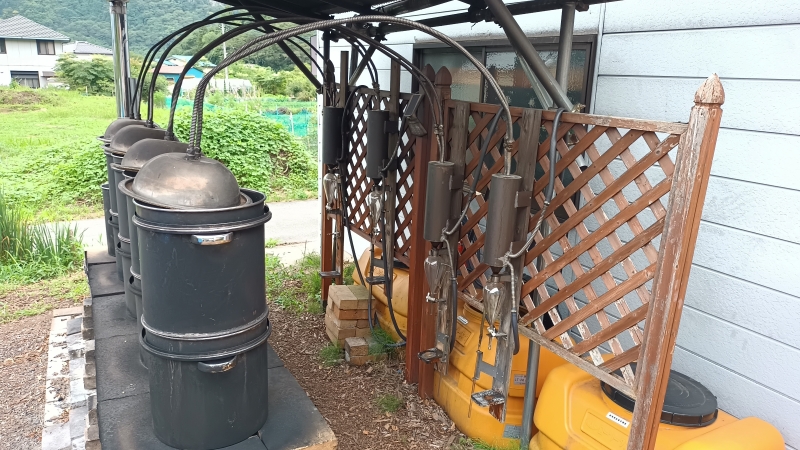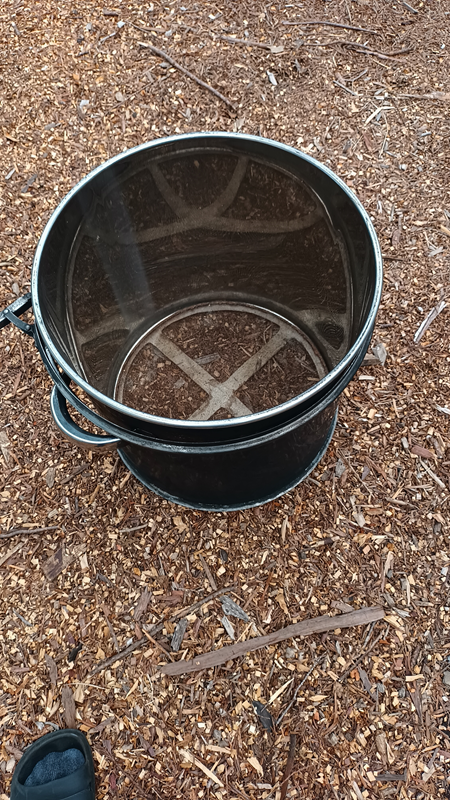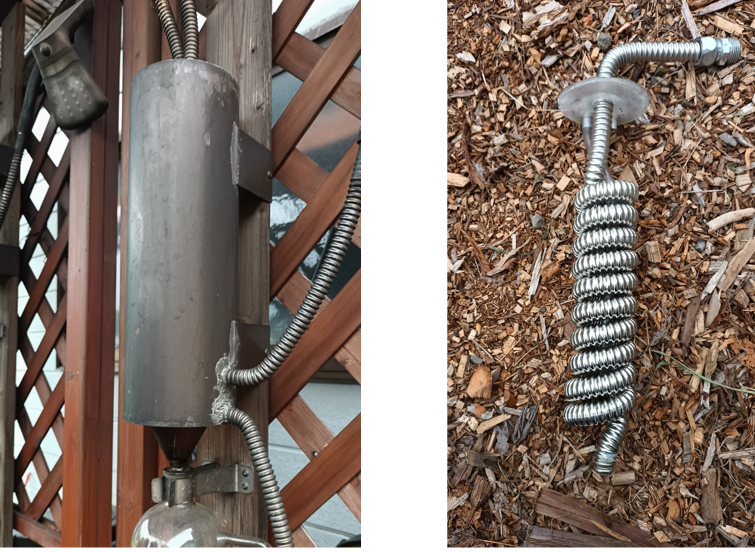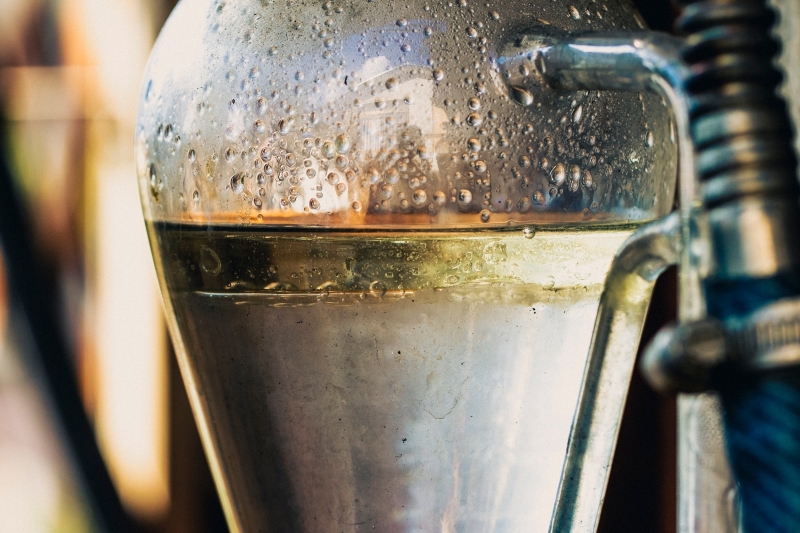- Knowledge Overview
-
Essential oils are natural materials extracted from flowers, leaves, peels, fruits, heartwood, roots, seeds, bark, resins, and other parts of plants. They are volatile aromatic substances with high active-ingredient concentrations (From the Japan Aroma Environment Association website).
The most commonly used method for extracting essential oils is steam distillation world-widely. Many essential oil producers currently use distillers that can distill 100 kg to 200 kg of raw materials at a time. However, many of these cost over several million yen per unit, making it difficult for people who cannot afford the initial investment to adopt them.
The distillers we use are the same as conventional ones in that they use the general steam distillation method to produce essential oils. However, the distiller comprises parts found at hardware stores; hence, one can make it themselves if they have simple welding skills. The manufacturing cost is less than one-tenth of that of conventional distillers. Because it uses readily available parts, a person can easily perform repairs and part replacements. In addition, because firewood can be used as a heat source during distillation, our distillation system can be introduced even in areas without electricity or gas, making it highly versatile.
- Background (history and development)
-
Essential-oil extraction dates back to the medieval Arabian physician Ibn Sina (980–1037). It is said to have begun when he established the “steam distillation method” by adding various enhancers to the method of extracting aromatic water from roses that had been used back then. 1)
In Japan, the fragrance culture was formed through the use of incense, which has been performed since ancient times, and during the Edo period, there was a fragrance extractor called a ranbiki. A ranbiki uses the same principle as that of the currently used steam distillation method to extract fragrances. Owing to its versatility, steam distillation is still the mainstream essential-oil extraction method worldwide. In recent years, however, essential oils have begun to be extracted using new technologies such as supercritical carbon dioxide extraction, which does not require overheating as does steam distillation.
- How to Apply Knowledge
-
Steam distillation is a method in which steam generated by heat is applied to raw materials such as plants to make them release aromatic components, which are then cooled to be extracted as liquid essential oils (Figure 1).

Figure 1. Distiller The distiller we developed has a two-layer structure with stainless-steel containers divided into upper and lower layers, and water and raw materials are placed in the lower and upper layers, respectively (Figure 2). The bottom of the upper-layer container has a mesh structure, while the water in the lower layer is heated, generating steam that passes through the mesh structure and hits the raw materials in the upper layer (Figure 3). When exposed to steam, plant tissue is destroyed, and the aromatic components contained within are released into the steam. The released aromatic components are carried through the pipe with the steam and pass through the cooling tube (Figure 4). The pipe inside the cooling tube is spiral-shaped and has cooling water circulating around it (Figure 5). As it passes through the spiral, the water vapor containing the aromatic components is cooled by thermal replacement, transforming from gas to liquid, passing through the pipe, and gradually accumulating in the oil separator. The aromatic components are fat-soluble oils that gradually separate from the water and form two layers (Figure 6). Since most essential oils have a lighter specific gravity than water, they can be seen separating to the top.

Figure 2. Overall view of the distillation system

Figure 3. Top part of the distiller (the bottom is made of mesh)

(Left) Figure 4. Cooling pipe
(Right) Figure 5. Image of the inside of a cooling pipe

Figure 6. Distillation process (the upper layer contains essential oils, and the lower layer contains aromatic distilled water) Our distillers can be made from materials available at a hardware store, allowing users to start a business at a relatively low cost with minimal initial investment. Therefore, even communities with difficulty in obtaining loans from financial institutions, such as small-scale farmers in developing countries, can adopt our distillers, granted they have welding skills. A major feature of our distillers is that they are easy to handle and maintain, since parts that break down or deteriorate can be easily replaced with readily available ones.
- Examples of Applying Knowledge
-
As it is the most widely used distillation method in the world, the steam distillation method is already employed in many countries and regions. The small-scale distillation system we have adopted has been introduced in several places in Japan, including our own company, and is gradually becoming more widespread. This project will represent the first time this small-scale distillation system will be introduced overseas.
- Positioning and Characteristics of Knowledge in Japan
-
Steam distillation is expected to continue being the mainstream essential-oil extraction method. Nevertheless, some facilities are beginning to introduce distillation techniques that use new technologies, such as microwave distillers and supercritical carbon dioxide extraction.
One of the benefits of using steam distillation is that it allows for the extraction of not only essential oils but also of aromatic distilled water, which contains aromatic components. Aromatic distilled water can only be obtained by distillation using steam, and it is said that the yield is ten times that of essential oils. Its use as an ingredient in cosmetics and, more recently, in sauna löyly is becoming more widespread. By making good use of aromatic distilled water as a product, essential-oil businesses have the potential to develop product portfolios and new sale channels that cannot be obtained using other extraction methods. For this reason, there will continue to be a certain potential demand for essential-oil extraction using steam distillation.
- Owners/inheritors of knowledge
-
- Hyuga Workshop
https://hinata-lab.com/aroma.html - Scent Letter Co., Ltd.
https://scent-letter.co.jp/scentofrebirth/
- Hyuga Workshop
- Related URLs (in Japanese)
-
Japan Aroma Environment Association
https://www.aromakankyo.or.jp/basics/oil/ - References
-
- Aromatherapy Standard Textbook, Semi-Textbook, Basic Edition (Maruzen Co., Ltd.) (Edited by the Japanese Society for Aromatherapy), (2008)
- Author (Affiliation)
-
Soichiro Nagabe (Scent Letter Co., Ltd.)
Your Knowledge could start making a change, when issue is faced; in forest conservation, or in value chains to use forest resources in a sustainable way.


Your Feedback.